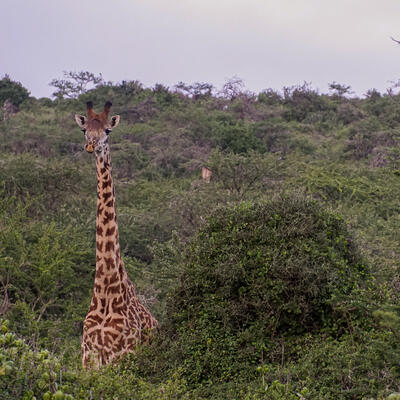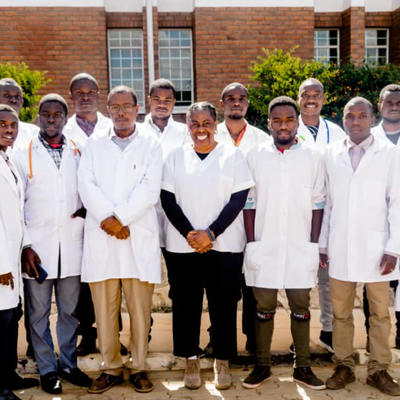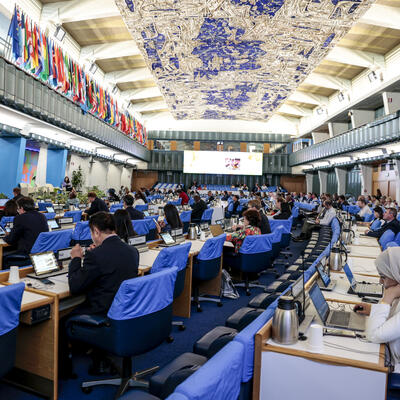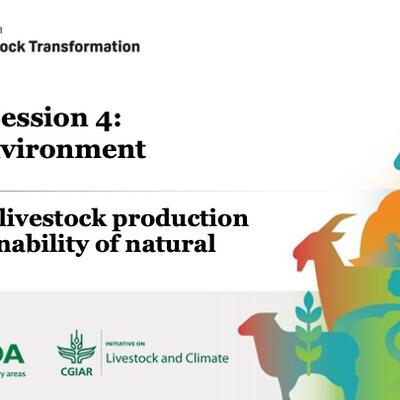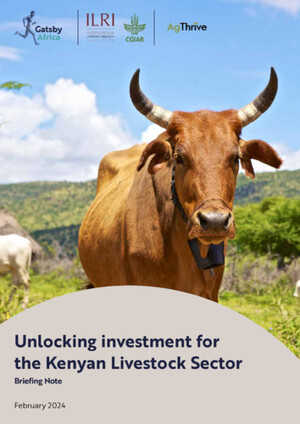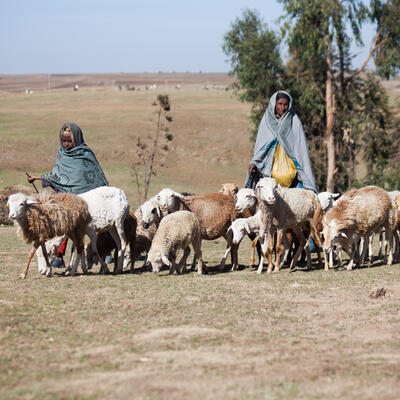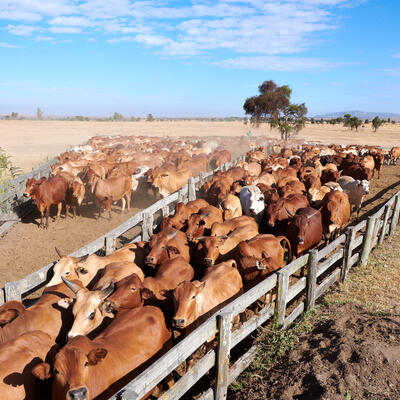

FAO conference on livestock transformation: Shirley Tarawali on 'the production imperatives'
Landmark UN conferences in Rome and Dubai are putting sustainable livestock issues in the limelight
At this year’s ongoing climate summit, in Dubai, livestock issues are being defined by the International Livestock Research Institute (ILRI) and its partners as a climate change ‘solution with legs’. The high profile of livestock and other food systems issues at this year’s climate summit, the 28th such annual event, is a first. This milestone was enhanced two months earlier by a global livestock conference hosted by the Food and Agriculture Organization of the United Nations (FAO), where 740 livestock experts—of all kinds and representing livestock systems of all kinds practiced in all parts of the world—gathered in Rome for a Global Conference on Sustainable Livestock Transformation. The agenda of the conference, the first of its kind ever held by FAO, was organized thematically around the Four Betters of FAO’s 2021 strategic framework: Better production, better nutrition, better environment and better life.
The FAO conference
Among the delegations participating in the FAO Rome meeting was one from ILRI. The afternoon session of the first day, on ‘Better Productivity’, was opened by Shirley Tarawali, assistant director general of the International Livestock Research Institute (ILRI) and chair of the Global Agenda for Sustainable Livestock (GASL). (You can listen to her 10-minute presentation here; it starts at 10:25 minutes and ends at 21:30 minutes.)
Shirley Tarawali argued that three things are imperative for transforming the livestock sector: Taking an integrated approach to livestock systems, ensuring that livestock interventions suit specific contexts, and building livestock systems that are sustainable. The need for ‘better livestock production’ is urgent in developing countries, she said. ‘More than 700 million people are hungry, 2.4 billion—a third of humanity—are food insecure, 3 billion are unable to afford a healthy diet and 148 million children are stunted. Many of us here being “livestock people” might say, “Well, the answer is more livestock—more livestock production”. But if we’ve learned anything in recent decades, it’s that it’s certainly not that simple.’

Shirley Tarawali opend the 'Better Production' session of the FAO livestock conference (photo credit: FAO).
What’s the good news?
Those working for a sustainable livestock sector have two things going for them, Tarawali told her audience. ‘First, we now have robust frameworks in place. We have the Sustainable Development Goals. We have the UN Food Systems Summit. We have 126 national food system transformation pathways developed. We have the Committee on Food Security and its high-level panel of experts. Second, we know a lot about how to improve livestock production efficiencies.’
What’s the problem?
Tarawali noted how global statistics can mask great differences in specific regional and national livestock production contexts. For example:
• Dairy production is expected to grow by 17% globally over the next ten years, but a full third of that production is in India, Pakistan and a handful of African countries.
• Meat production is predicted to grow 2.5% annually over a ten-year period, but the average in upper-middle-income countries is 14%, with half of that expected to be poultry.
• The production context also greatly varies depending on whether what’s being produced is poultry, or red meat, or eggs, or dairy. . . . And on whether the animals are being raised in backyards, on medium-sized farms, or in large-scale commercial enterprises.
Another problem, Shirley suggested, was that changes in the livestock sector have tended to be evolutionary in nature. ‘To bring about real transformation—transformed livestock systems that will enable livestock production to feed millions of hungry people while enduring a climate crisis—will depend on our making better and more consistent use of three imperatives.’
What’s the answer?
First, Tarawali said, it’s imperative that we design livestock productivity interventions for specific contexts—for very different levels of livestock demand and supply, for example, and for very different livestock commodities, and for very different livestock production practices and systems and agro-ecologies. Only by attending to such specific contexts, she said, will we be able to harness the huge diversity of the world’s livestock systems, peoples and landscapes.
Second, she said, it’s imperative that we take integrated approaches to livestock production to address simultaneously not only the many drivers of livestock productivity—animal production, processing, trading, marketing and consumption—but also the wider business, policy and institutional environments within which livestock production operates.
Third, she said, it’s imperative that we develop sustainable solutions by recognizing that ‘better livestock production’ does not necessarily mean more livestock production. To be sustainable, she argued, better production must also serve better nutrition, better environments and better lives.

FAO’s plenary hall, venue of the livestock conference, and its elaborately decorated ceiling (photo credit: FAO/Cristiano Minichiello).
Some solutions
As Tarawali pointed out, the livestock sector is not a single thing but many things. What appears to excite her the most about the livestock sector right now are the various projects experimenting with, and successfully implementing, various changes in livestock production practices around the world. She mentioned a handful of successful livestock research-for-development projects in Africa and Asia that she knows well, due to her leadership at ILRI. These projects, she suggests, show us that there are plenty of exciting and alternative innovations on the horizon—and already on the ground.
Examples of context-specific solutions
Five- and fifteen-year livestock master plans have been co-developed by national government ministries and international livestock scientists. These plans are now helping a dozen developing countries to better prioritize their investments in the livestock sector through evidence-based assessments that help them determine what parts of the livestock sector to work on first—whether, for example, the country would benefit most from investing in dairy or beef cattle, or poultry or pigs, or whether attention is best focused on improving the feed, genetics or health services and support? of the animals.
In Ethiopia, Nigeria and Tanzania, livestock geneticists are harnessing the rich genetic diversity of indigenous African chicken and dairy breeds. And by marrying their state-of-the-art genetics technologies with advanced mobile-based communications with local communities, they are breeding and delivering to local farmers and herders chickens and cows better able to tolerate heat stress and other harsh conditions.
Example of integrated solutions
A CGIAR initiative is working to bring together the best animal health, feeds and genetics interventions suiting specific contexts, locations and commodities and then working to ensure that those interventions are well-supported by functioning markets, appropriate policies, enabling institutions, and new business opportunities, especially for young people and women.
Examples of sustainable solutions
In Australia, New Zealand and North America, recent improvements in the dairy sector are significantly lowering carbon emissions per unit of output. Similar improvements, it’s predicted, could be made in South Asia’s booming dairy sector—and not by switching to a large-scale grain-based dairy systems but largely by making better use of locally available forages and importantly improved crop residues.
In West Africa, food waste is being transformed into livestock feed. A project is turning enormous amounts of cassava peels, which are an environmental hazard, into livestock feed, generating not only nutritious feed for animals but also greater incomes and jobs for people.
And livestock scientists are providing African countries with their first accurate Tier 2 greenhouse gas emission data. This gives these countries the reliable baseline data they will need to demonstrate when, and how much, their livestock production efficiencies improve.
Multistakeholder opportunities
Simultaneously tackling these three imperatives—designing for specific contexts, taking integrated approaches and developing sustainable solutions—is of course challenging, Tarawali said, 'Particularly now. In just the past few years we’ve experienced global, regional and national disease pandemics, conflicts and climate crises.'
'We need to be able to respond to these and other (both sudden and slow-moving tsunamis) much, much quicker. And to be much more nimble in our responses.
'One way to achieve that', she said, 'is through inclusive and productive multistakeholder engagements.'
Tarawali chairs the Global Agenda for Sustainable Livestock (GASL), which is helping the diverse public and private members of the global livestock community to come together to foster a more sustainable livestock sector. She mentioned the recently formed FAO Sub-Committee on Livestock, which is bringing the public sector together. And she noted the ongoing work of the UN Food Systems Summit, which is bringing together all those involved in food production, processing, transport and consumption.
‘So it seems that we have well-considered frameworks with which to develop, refine and test our solutions.
'These pieces present opportunities to act together to bring about better livestock production through context-specific, integrated and sustainable approaches and solutions.
‘These are opportunities that must be grasped.'
You may also like
Related Publications

Food Safety Technical Working Group in Vietnam E-bulletin, July-December 2024
- Food Safety Technical Working Group in Vietnam

Context Matters: Tackling Methane in Livestock Systems for a Sustainable Future
- Food Systems for the Future (FSF)
- Environmental Defense Fund
- International Livestock Research Institute

One Health scientific conference: International practices and lessons learned for Vietnam
- Vietnam One Health Partnership
- International Livestock Research Institute
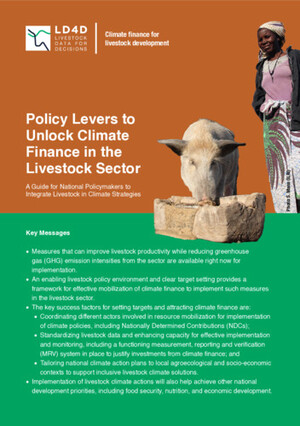
Policy levers to unlock climate finance in the livestock sector: A guide for national policymakers to integrate livestock in climate strategies
- Alemayehu, Sintayehu
- Cramer, Laura
- Gonzalez Quintero, Ricardo
- Kimoro, Bernard
- Kohler, Gregory
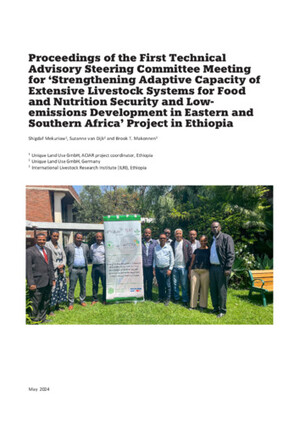
Proceedings of the First Technical Advisory Steering Committee Meeting for ‘Strengthening Adaptive Capacity of Extensive Livestock Systems for Food and Nutrition Security and Low-emissions Development in Eastern and Southern Africa’ Project in Ethiopia
- Mekuriaw, Shigdaf
- Dijk, Suzanne van
- Makonnen, Brook T.






